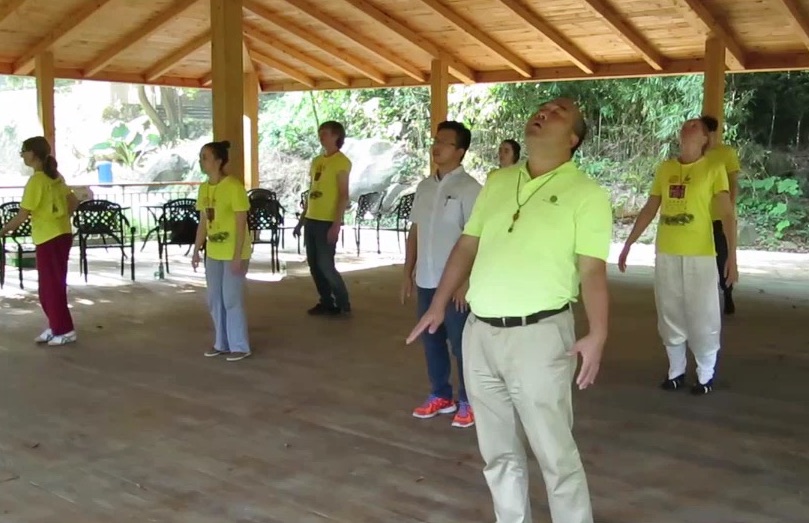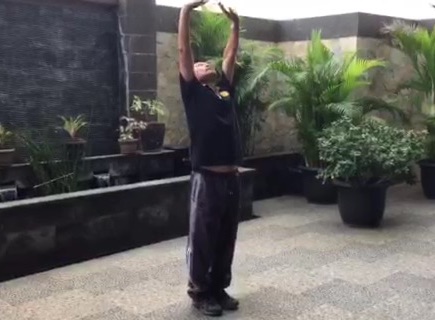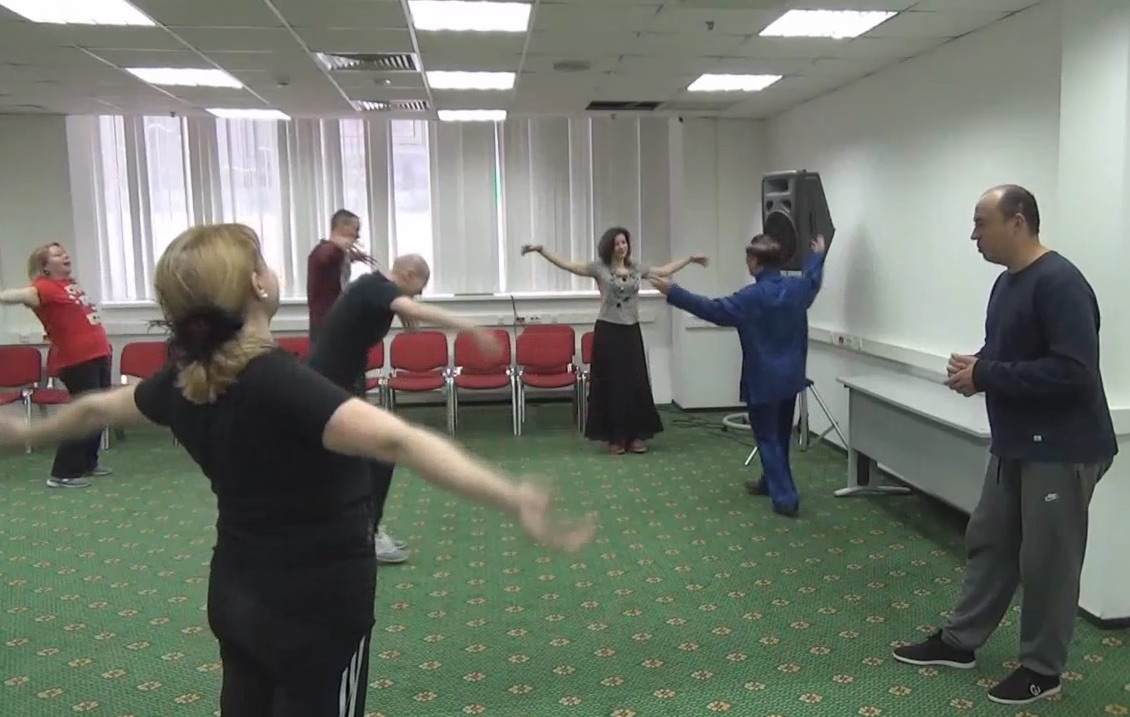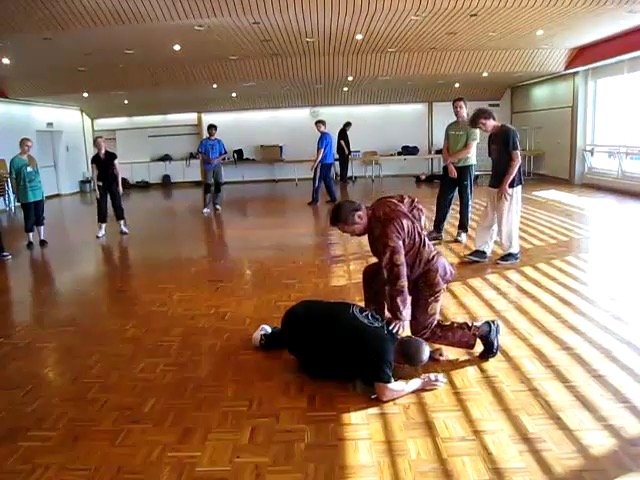SELECTION OF QUESTIONS AND ANSWERS
AUGUST 2019 PART 1

Chi Flow
Question 1
I practiced chi kung before in another school, but I did not have any chi flow. Why? You mentioned that you took many years before you could have a chi flow, yet all of us have a chi flow in a very short time. Why?
— Susan, England
Answer
You did not have any chi flow despite practicing chi kung from another school because you only performed gentle physical exercise although you used chi kung techniques. This is the case of more than 80% of those who say they practice chi kung. Usually they are unaware that they are not practicing chi kung, which is an energy exercise, although they use chi kung techniques. In the same way a lot of people today are not practicing Taijiquan, although they use Taijiquan techniques.
Out of the less than 20% they may have some chi flow but they may not realize it. They may sway gently, or a few of them may feel warmth flowing down their body or they feel bigger though it is not easily seen. This chi flow happens only occasionally, though they may practice everyday. Hence it takes them a long time, in a matter of years, to have some chi kung benefits.
I was like these people in my early years. Hence it took me many years to have a chi flow.
In your case, like all other practitioners in our Shaolin Wahnam courses, the chi flow happens very fast, within half an hour of a course. There are some reasons for this happening.
Firstly, we differentiate between techniques and skills. Most people don’t make any differentiation. They think that if they have the right techniques, and practice the techniques delicately they will get the result eventually.
Secondly, because I make the differentiation, I ensure that our students are relaxed and free their mind of all thoughts. These two conditions, being relaxed and being freed of all thoughts, are called entering into a chi kung state of mind. They are a necessary condition to practice chi kung. If practitioners are not in a chi kung state of mind, they only practice gentle physical exercise though they use chi kung techniques.
As most people only perform gentle physical exercise and not chi kung, which is energy exercise, they do not get chi kung benefits. Hence, many people are still sick and weak despite they say they have practiced “chi kung” for many years.
A third reason, which is very important, is that I transmit the skill of entering into a chi kung state of mind to students. Instead of the students practicing for some time so that they become skillful, I transmit the skill to them immediately. Hence, you like all other students in the course have a chi flow within half an hour of the course.
Question 2
If I start to have chi flow after only two or three moves, do I still have to continue the remaining repetitions?
— Jorge, Portugal
Answer
It depends on your aim of performing the exercise for that session.
If your aim is only to have chi flow, there is no need to continue your remaining repetitions. For example, you planned to perform “Lifting the Sky” for about 15 repetitions. After about only two or three repetitions, you have already generated a chi flow. You need not continue the remaining repetitions. You just enjoy your chi flow. You may complete your session before the 10 minutes per session, yet you may have better result. It is the chi flow that gives the result, not the exercise itself.
However, if you have other aims besides generating a chi flow, like you want to correct your posture or to attain a one pointed mind, you may “tame” you chi flow movement and continue the repetition. Chi kung is like a physical mixture, not a chemical compound.

Lifting the Sky
Question 3
Can we combine a play with another play in Five-Animal Play?
— Eli, Spain
Answer
Yes, you can. For example, you can combine the bird play with the deer play or the tiger play with the monkey play.
Next, you can also combine a play with any other exercise from any style of chi kung we have learnt. For example you can combine the bird play with “Lifting the Sky” from 18 Lohan Hands. You can also start with “Lifting the Sky” or any chi kung exercise from our chi kung with the bird play or any play from Five-Animal Play.
Thirdly, you can also combine any play from Five-Animal Play with any other chi kung exercise from other schools.
There are not just two exercises in a combination. You can also have more exercises for your combination. For example, you can do the bird play and the monkey play and then combine with any other chi kung exercise you know from our school or other schools in any way you like. If you do not want to perform any exercise from Five-Animal Play, you can have any other combination from any chi kung exercise.
But the time of your combination is about 10 minutes. If you have a combination of exercises, it is usually best to have the chi flow at the end of all your exercises. However, if you like, you can also have a chi flow after each exercise or any number of exercises. After all chi kung is like a physical mixture, not a chemical compound.
This combination applies to our school. Other schools may have their own systems.
Question 4
If I become known for walking into other martial arts gyms and asking certain students for sparring (only those whom I have a 95% chance of beating), presuming that the teacher and students will allow me to “case out” my prospective opponent and that the opponent agrees to spar with me after realizing he was probably being observed and “cased out”, it seems I might get known around the place and that after a few times, people may not want to spar with me or let me in their gyms, or if they do, they would put their highest level guys (who I do not have a 95% chance of beating) against me. I would look cowardly if I refuse to spar.
— John, Ireland
Answer
Your scenarios will work out if you go to a gym 30 times, presuming you have 30 opponents.
It will be different if you ask many opponents at the same time, preferably not the first time you visit the gym. As you have observed them, you have to line them up according to your judgment. Your judgment may not be perfect, like your opponent 15 may be better than your opponent 18, but it will not seriously affect your 30-opponent programme.
You may not get 30 opponents at one place, in which case you may have to visit a few places.

Bird-Play in Five-Animal Play
Question 5
Once I can cover instinctively and at all times become fluent in the 12 basic Wudang sequences, then I will start the 30-opponent program.
Answer
You don’t have to wait until you are fluent in your 12 Wudang sequences. You can use just one combat sequence, from your normal Taijiquan sequences or your Wudang sequences if you like, for the 30-opponent programme.
Your first few opponents, whom you can beat easily, will provide you a lot of practice to cover yourself as well as to develop other aspects of combat. By the time you come to your latter opponents, you are well versed in your coverage and other combative aspects, and shall beat them quite easily.
Question 6
Also Sifu, I wondered about rules per match in the 30 opponent program. It is ridiculous but true (and one of the main differences between combat sports and martial arts) that if I land a strike to the groin in most martial arts scenarios (though these would in fact be combat sports situations), then a point would be deducted from me or I would be viewed as a “dirty” fighter or unfair.
However of course, my aim is to improve my kungfu which is a martial art. I don't want to maim my opponent but if I land a strike to his groin or throat at only half power (which enables him to fight on), I am relying on his sense of fair play to admit that I won the fight and say that I won.
However, since I would be entering into his combat sports context, he might be unlikely to do that in front of his combat-sports classmates and keep fighting as they normally do since they wear protective gear.
Answer
The 30-opponent programme can be used for real fighting or for sports with safety rules. Even in a real fight, you do not want to maim your opponent permanently, like poking into his eyes or smashing his groin. You stop an inch or two before target.
If your opponents refuse to concede defeat, you just carry on. If you follow the 30-opponent programme, you will be striking an inch or two before target many times, though you may not be able to do so if you fight your latter opponents at about the same time you fight your earlier opponents.
An excellent way is to control your opponents so that they can hardly move. You can fell your opponents to the ground, control them with your knee, and place your fingers an inch from their eyes, indicating that you can poke your fingers into their eyes if you want to but you don’t. I did that often with real opponents in my younger days, and I do that now in demonstrations.

We hold our strikes in practice or friendly sparring; but we will be ready to damage seriously in a challenge
Question 7
If someone challenges me outside of the 30-opponent program say, by insulting Sifu, our school Shaolin Wahnam or Shaolin arts in general, then if he really wants to test our kungfu, I won't be pulling any punches, finger jabs or groin strikes and if he gets injured while discovering that our kungfu is alive, then that is not the problem of genuine Shaolin Kungfu which is a martial art or the problem of someone who practices it.
Answer
If someone seriously insults me, our school or our arts, the first thing you should do is to let me know. We shall study him (or her, but this has never happened in our school) and accept his challenge. We shall place not just one but many Family members, including female members, against him, though we know for sure that our first member will easily beat him. We are scholar-warriors; we accept a challenge only when we know for sure we will win.
We shall not hold any strikes in a challenge. All those who represent us must be ready to damage, maim or even kill the challenger. But we shall make necessary legal precautions first, though we know and be ready to accept any unpleasant consequences. We shall also video-tape the challenge and publish it.
However, if the insults are not serious, we ignore them. At the beginning, many people say that I was a big liar. They could not believe what we said, like genuine kungfu was superior and over-coming so-called “incurable” diseases was possible with chi kung healing. I was serious when I said. It was their business to accept what I said, and we did not want to waste time arguing with them.
Interestingly, we don’t have such troubles now. Perhaps people have seen our videos, and know our combat efficiency and internal force.
Question 8
But in the 30-opponent program, I wonder about agreeing to a set of rules in advance of a match, for example that even a tip to the eyes or throat is a fight ending move and therefore a victory to the one who lands it.
Answer
Personally I don’t think agreeing to a set of rules can help much. Dissatisfied opponents will still continue fighting despite the rules, but gallant opponents will concede defeat. But controlling an opponent like what I mentioned earlier is a better choice, irrespective of whether the opponents are dissatisfied or gallant.
Editorial Note: John’s other questions can be found at July 2019 Part 3 issue of the Question-Answer Series.
If you have any questions, please e-mail them to Grandmaster Wong via his Secretary at stating your name, country and e-mail address.
LINKS
Selected Reading
- Chi Kung: the Art of Developing Vital Energy
- Over-Training and Deviation: How to Prevent or Overcome Them
- Wonderful Benefits of the Shaolin Five-Animal Set
- I'm very Stressed Out for a 15-Year Old
- Gods and Godesses at Night Market
